WordPress Security Checklist; How To Protect WordPress Site From Hackers?
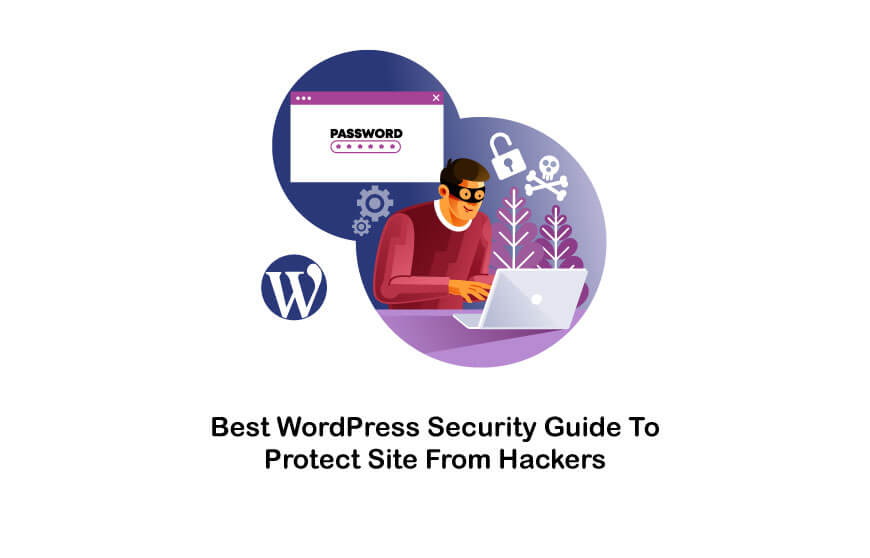
WordPress is the most popular CMS in the world that currently powers more than 35% of the Internet. Simplicity and versatility are the two most important factors that add to the fame and credibility of this software. Although this CMS is a secure platform, and you can be sure about the WordPress security and functionality, we sometimes hear about some websites that have been attacked by hackers. The good news is that there are tips that can help you maintain a safer WordPress hosting and site.
Why WordPress Security Is Important?
When it comes to secure your WordPress site, first we should consider that WordPress is an open-source platform that is not controlled by a single entity. It means that everyone can bring out a theme or plugin that is further used by thousands of users. In fact, this freedom makes it difficult to secure the complex WordPress ecosystem.
A secure WordPress site does not only assure the protection against cyberattacks but also helps in raising the trust of your customers who shares their sensitive information when they purchase your products and overall when they join your website. A hacked WordPress site can create serious damage to your business reputation and revenue. Hackers can steal passwords, user information, install malicious software, and can even distribute malware to your customers.
There are lots of WordPress cyber security plugins that can help you protect WordPress site from hackers but remember counting just on plugins is not enough. In this case, you need to secure WordPress hosting to deal with other complex security weaknesses.
If you are willing to know the wordpress security plugins comparison , don’t miss this post!
WordPress Security Checklist
If you own a WordPress website, it is essential to be mindful of security. It will help you to stay away from unexpected problems that would come on your way. Hackers are always trying to lead you to trouble. It would help if you were careful not to fall into the trap of them. That’s why you need to be mindful of security at all times. Here’s a quick WordPress security guide that you can follow to ensure the safety and protection of your website.
How To Secure WordPress Website From Hackers?
1. Strong Passwords
The first item in the WordPress website security checklist is using strong passwords. Hackers can use password generators to define your admin panel’s password. In case you use a weak password or set the same phrase on multiple accounts, you increase your chances of undergoing an attack.
Typically for launching a WordPress website, you are required to define a password for different places. WordPress database, website’s admin panel, and also for connecting to your site via FTP. Users usually have a problem remembering their passwords and therefore tend to choose the same combination of numbers and letters everywhere.
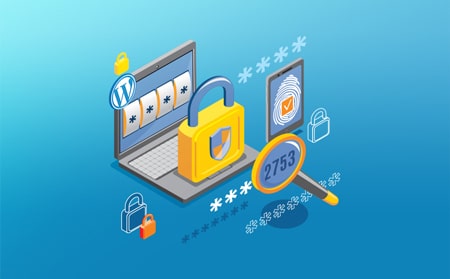
The right solution for this problem is using password manager software for your platforms. These encrypted and secure tools can store your website passwords and input them in the place you need them. Keeper Security, LastPass, and Dashlane are among the popular tools in this regard.
2. Limit Access to Your WordPress
WordPress lets you create several users’ accounts for your website. It can come convenient if you have multiple content writers. Evidently, the more usernames and passwords you create, the higher the risks of hacks will be. One of your users may choose a weak password, or get his account compromised by other possibilities.
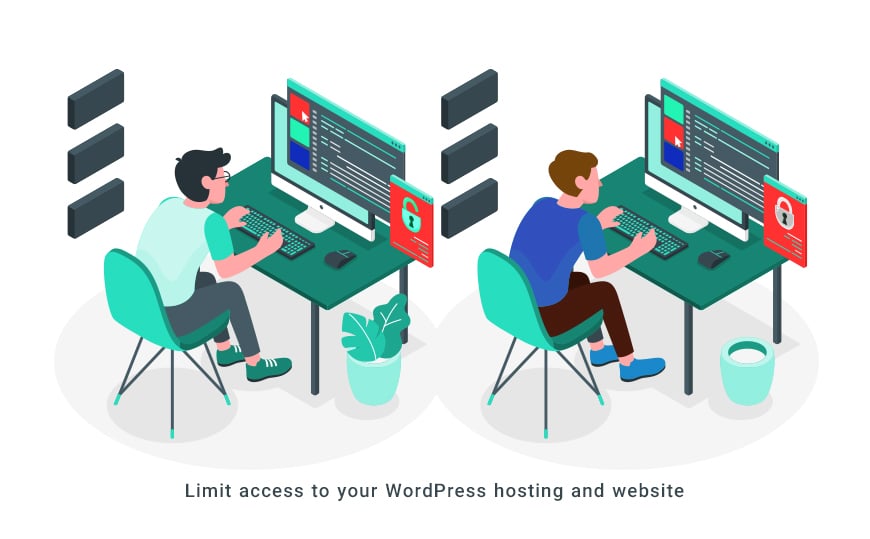
So, what should you do to minimize the risks on your platform? We suggest that you provide exact privileges for each user according to what they are going to do on your website exactly. For instance, give access to the posts section for a writer since he/she doesn’t need to make any changes in the plugins or site settings.
If you are interested to know session hijacking techniques , this article can help you!
3. Use Firewall

Firewalls used for websites act as a filtering mechanism, and your traffic will pass through this tool before reaching the site. These security tools can block malicious traffic and only let the good traffic pass. Also, the hackers and bots are continuously being blacklisted in these tools, and you can be sure they never reach your online presence.
4. Have Backups
5. Set Limit on Login Attempts
You can also use WordPress plugins dedicated to this safety procedure. One of the most famous ones is called Limit Login Attempts Reloaded, which is completely free and used by more than one million users.
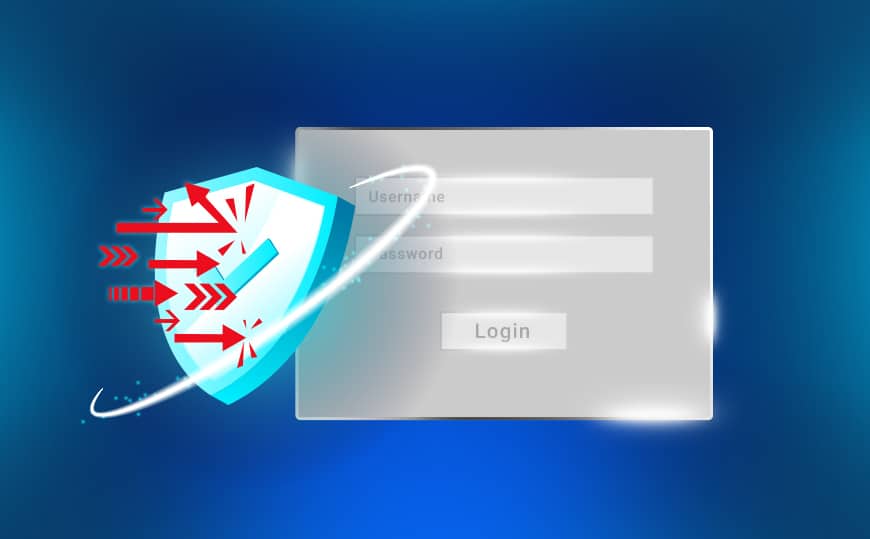
6. Keep Everything Updated
As mentioned before, always try to keep your website and its tools updated. The developer companies usually provide new patches and updates after they find security holes. Also, you are advised to install the least number of plugins on your site. Although various plugins can bring a ton of new functionalities to you, they can also make you less secure and more vulnerable to attacks. Always check the quality and the programmer team of a plugin before installing it.
7- Move Your WordPress Site to SSL/HTTPS
The data transferred between the user and your website is encrypted using an SSL certificate or Secured Socket Layer Certificate. This is ESSENTIAL for websites where users pay customers inputting payment information to purchase products from your store.
Sure, if you’re operating a blog and aren’t selling anything, a free Let’s Encrypt SSL Certificate will suffice. If you’re accepting payments, though, you’ll need an SSL. Instead of seeing a red “Not secured” notice in the address bar when using an SSL, you may type https:// in front of your site.
Because of their security, SSL Certificates have ingrained confidence in the public, even more so with the fabled Green Bar SSL, called an EV SSL Certificate, because people know those firms have been vetted and validated by a reputable security provider.
8- Change the Default “Admin” Username
The admin username for most WordPress websites is still “admin.” If you have this admin username, it is high time to get rid of it. That’s because anyone can guess that name and try to gain access to your website. You need to pay special attention to this fact as you go through the WordPress security guide.
WordPress will not provide you the functionality to change the default username at the time of installing. However, few installers will help you with it. The best thing you can do is create a new admin account from Users and delete the current admin account you use. There are username changer plugins that you can use to change the default “admin” username.
9- Disable File Editing
WordPress includes a code editor that allows you to modify theme and plugin files directly from the WordPress admin area. This functionality can be a security concern in the wrong hands, which is we encourage you to turn it off.
There are some detailed guides available on how to do this. You can go through one of those guides after reading this WordPress security checklist.
10- Disable PHP File Execution in Certain WordPress Directories
When you disable PHP File Execution in some of the WordPress directories, you will be able to make it difficult for people to gain access to your website. Disabling PHP file execution in folders where it isn’t needed, such as /wp-content/uploads/, is another approach to improve WordPress security.
There is a plugin, which can help you get the job done without a challenge. The plugin is named Sucuri. You can use the plugin and get your work done without a challenge. It will help you to overcome the problems that you have to face in the long run.
11- Add Two Factor Authentication
To make your WordPress login even safer, use Two-Factor Authentication. A second step is added to the login process using Two-Factor Authentication. To log in, you’ll need a text (SMS) or a time-based one-time password (TOTP). Brute force assaults on your WordPress admin panel may be avoided entirely with two-factor authentication.
We recommend utilizing the free Google Authenticator plugin since it allows you to add an infinite number of users. Download the plugin and select a user account. Then, either by establishing a new secret key or by simply scanning the QR code, you may set up two-factor authentication. After that, make sure it’s marked “Active.” This is one of the most important things that you should do to protect WordPress site from hackers.
You will be asked to input a six-digit code after you enter your username and password on the login page with 2-Step Verification enabled. Even if you have the correct login and password, you will be unable to log in unless you supply this six-digit number.
12- Change WordPress Database Prefix
If you wonder how to improve WordPress security, you can think about changing the database prefix. WordPress prefixes all tables in your WordPress database with wp_ by default. If your WordPress site uses the default database prefix, it will be easier for hackers to guess the name of your table. This is why we advise you to change it. You may increase security by changing your database prefix by following our step-by-step instructions on how to change the WordPress database prefix.
13- Disable Directory Indexing and Browsing
When your webserver can’t locate an index file (index.php or index.html), it shows an index page that lists all of the files and directories in that web directory by default. This exposes vital information needed by hackers to exploit a vulnerability in a WordPress plugin, theme, or your server in general, potentially making your site open to assaults.
Disabling directory indexing is something that you can do on your own. All you have to do is add the following piece of code into the .htaccess file, which you can see in the website’s root directory.
“Options – Indexes”
14- Disable the Plugin Editor
We also recommend disabling plugin editors to the people who look for ways on how to make WordPress more secure. WordPress has a number of the easy-to-use plugin and theme editors. While these editors are great for editing your theme/plugins in the same wp-admin where you do everything else, they also provide you direct access to your site’s code. If someone gains access to a user account with adequate rights, they will have direct access to your site and will be able to make malicious modifications with ease.
Most WordPress users will seldom use the plugin and theme editors. It’s just as simple to re-enable the plugin and theme editors as it is to disable them if you’re the sort of user that enjoys tinkering and custom coding. It’s just one line in your wp-config.php file:
define('DISALLOW_FILE_EDIT', true);
This will not be the end-all solution for preventing a hacker, but it will confuse and deter less experienced hackers. At the very least, it will make accomplishing anything on your site more complex, giving you more time to figure out what went wrong.
15- Hide Your WordPress Version
When you hide the WordPress version, you can secure your WordPress site more effectively. Hide your WordPress install version is another excellent technique. Anyone looking at your site’s source code can readily see what version of WordPress you’re running, and if you’re not perfect at keeping up with the newest upgrades, this can be a welcoming sign for hackers.
You can add the following code into the function.php file of your WordPress website.
function wpversion_remove_version() {
return '';
}
add_filter('the_generator', 'wpversion_remove_version');
Make sure that you do this by editing the source code of your WordPress website correctly. If you fail to do it, you will end up breaking the functionality of your WordPress website. In case if you have second thoughts on how to do this, make sure that you get in touch with an experienced developer. You need to ensure that your website functions as usual while trying to learn how to harden WordPress security.
16- Disable XML-RPC in WordPress
Because it helps link your WordPress site with online and mobile apps, XML-RPC defaulted in WordPress 3.5. XML-RPC may dramatically increase brute-force assaults due to its robust nature. For instance, if a hacker wanted to try different passwords on your website in the past, they would have to make distinct login attempts, which the login lockout plugin would catch and reject.
A hacker, on the other hand, can use the system via XML-RPC. Using the multi-call function, you may test tens of thousands of different passwords with as little as 20 or 50 queries. As a result, if you’re not utilizing XML-RPC, we recommend turning it off. You can find three different methods to disable XML-RPC within your WordPress website. Read a detailed guide on how to do it and pick the most convenient method for you.
17- Add Security Questions to WordPress Login Screen
Adding a security question to your WordPress login page makes it more difficult to gain unauthorized access. Installing the WP Security Questions plugin will allow you to add security questions. To configure the plugin settings, go to Settings » Security Questions after it’s been activated. Make sure that you follow a detailed tutorial on this and learn how to increase WordPress security.
18- Scanning WordPress for Malware and Vulnerabilities
If you have a WordPress security plugin installed, it will scan for Malware and indicators of security breaches regularly. In case if you see a significant reduction in website traffic or search results, you should manually perform a scan. You can use each of these malware and security scanners or your WordPress security plugin.
It’s simple to use these online scans; enter your website URLs, and their crawlers will search your site for known Malware and dangerous code. Remember that the majority of WordPress security scanners can only scan your website. They won’t be capable of getting rid of the infection or cleaning up a hacked WordPress site. This leads us to the following section, which is about removing Malware and hacked WordPress sites.
19- Install SSL Certificate
The data transferred between the user and your website is encrypted using an SSL certificate or Secured Socket Layer Certificate. This is ESSENTIAL for websites where users are paying customers who input payment information to purchase products from your store.
Sure, if you’re operating a blog and aren’t selling anything, a free Let’s Encrypt SSL Certificate will suffice. If you’re accepting payments, though, you’ll need an SSL. Instead of seeing a red “Not secured” notice in the address bar when you use an SSL, you may type https:// in front of your site.
Because of their security, SSL Certificates have ingrained confidence in the public, even more so with the fabled Green Bar SSL, called an EV SSL Certificate, because people know those firms have been vetted and validated by a reputable security provider.
20- Prevent Hotlinking
Other websites will be unable to connect directly to files on your website if you use Hotlink Protection. Using the img> element to show an image from your site on another site on the internet is an example of hotlinking. As a result, the other site will steal your bandwidth.
Preventing hotlinking is not something difficult to do. All you have to do is open the .htaccess file of your WordPress root folder and add the following code.
RewriteEngine on
RewriteCond %{HTTP_REFERER} !^$
RewriteCond %{HTTP_REFERER} !^http(s)?://(www\.)?domain.com [NC]RewriteRule \.(jpg|jpeg|png|gif)$ - [NC,F,L]
There are online tools that you can use to get the same functionality as well. By using such a tool, you can generate a new .htaccess file. You can replace the original .htaccess file of your WordPress website with this. Then you can ensure the protection of pictures and images of your website. On top of that, you can also stay away from security breaches that you will come across.
WordPress security is something that all website owners should take seriously. That’s because search engines such as Google tend to blocklist more than 10,000 websites per day. After all, they contain Malware. On top of that, more than 50,000 websites are blocklisted every week because of phishing. Make sure that you don’t become a victim of it by adhering to these steps.
Is WordPress Easily Hacked?
WordPress Security Vulnerabilities
- Brute Force: It is an easy way of attacking in which the hacker activates a bot that tries numerous usernames and passwords from its dictionary to enter the admin panel. Many websites do not provide hard passwords and are incredibly vulnerable to these attacks due to not being secure.
- DDoS attacks: This approach can be a potential threat to all platforms. In simple words, it means the flow of numerous requests towards your service and website. These requests are usually received from several IPs called Botnet. They can deactivate your website and even the hosting infrastructures.
Other complicated attacks: Other types of attacks, such as SQL injection or XSS, can also impact your WordPress hosting and website. These approaches could lead to redirecting your site to another page or even transferring viruses to your platform and users’ systems for a specific purpose.
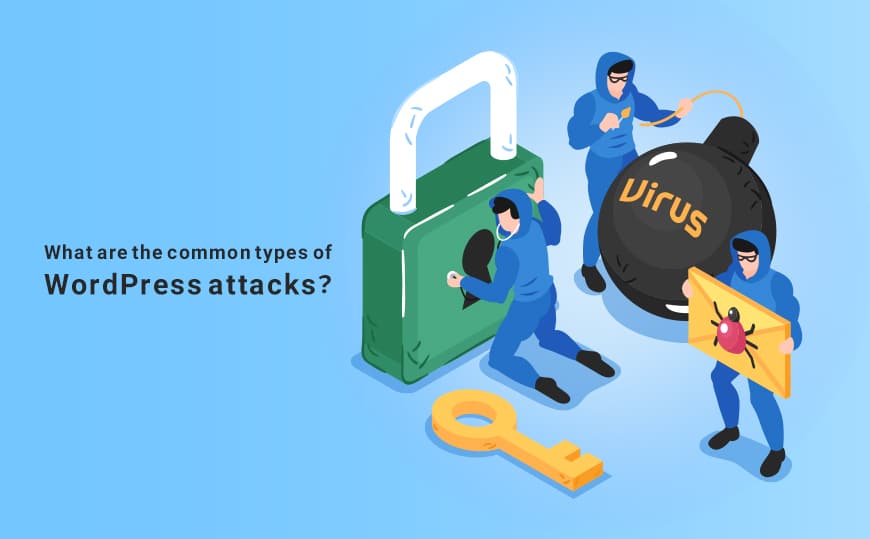
Suggest you read our article about what is a ddos attack
What Are the Reasons for Getting Hacked?
The team of developers at WordPress provides regular updates for users to keep the platform secure in the best way possible. However, not following the security practices for your website can make it prone to hacker attacks. Either you have a small business or a big corporation, a website hack can cause severe problems and expenses for you. You may lose your rank in SERPs and even experience data breaches and lose your private data.
If you are looking for the best wordpress bulletin board plugin , this article can help you!
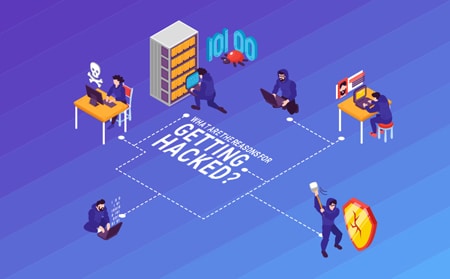
1) Unfixed Vulnerabilities
2) Outdated WordPress Core and Plugins
If you don’t update the WordPress core platform and the installed plugins to the latest version upon release, you are missing the new security algorithms, and therefore you can be attacked easier. Every day, thousands of new viruses are published on the web, and outdated tools cannot be protected from them and are not secure.
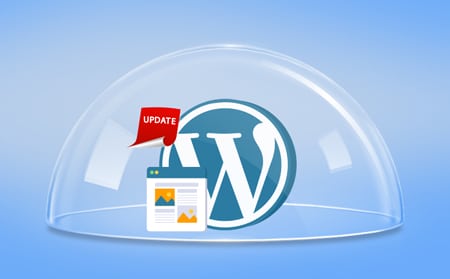
3) Illegal Plugins and Themes
4) Security Failures
5) Not Having Enough Information and Skills
If you use services such as Facebook and Google Maps on your website, you should take enough care and use them properly to avoid increasing the chances of hacks. Also, you need to manage your site efficiently as it grows and you get more users. You ought to always use reliable tools for managing malware and spam on your website.
If you are interested to know what is web server software , this post can help you!
Conclusion
WordPress is a renowned platform that is used by many website owners all around the world. As its renown grows, the potential threats increase as well. You, as a website manager, should always keep an eye on the latest tools and updates for securing a WordPress site to avoid any possible data and money loss. Implementing some simple practices and activities can assist you with your website’s security tremendously, such as learning about how to make WordPress more secure as well as discovering the best plugins for your website.
As you can view, there are various solutions that help you harden the security of your website. Keeping core and plugins up to date, using clever passwords for database, WordPress hosting account, or your custom email addresses which use your site’s keyword in the domain name, and picking out a securely managed WordPress host are just a few that will keep your WordPress site up and running safely. Remember always, your WordPress site is both your business and income, so it’s important to take some time and implement some of the security best practices mentioned above. For more information click here .
Suggest you read our article about the best google adsense plugin for wordpress


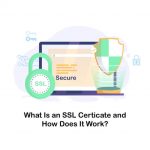
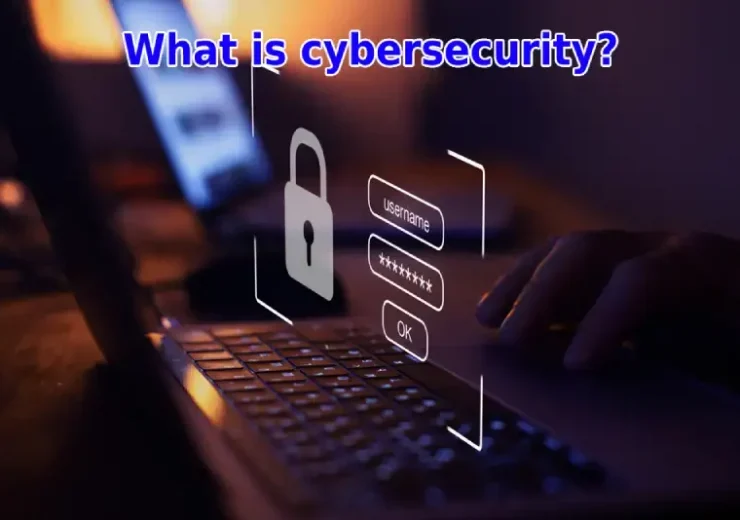
Perfect guide! I recently started site for my own business and was looking for how to protect my wordpress site from hackers. I found some useful tips in your article, especially keeping my plugins updated all the time. I didn’t know that it matters really.